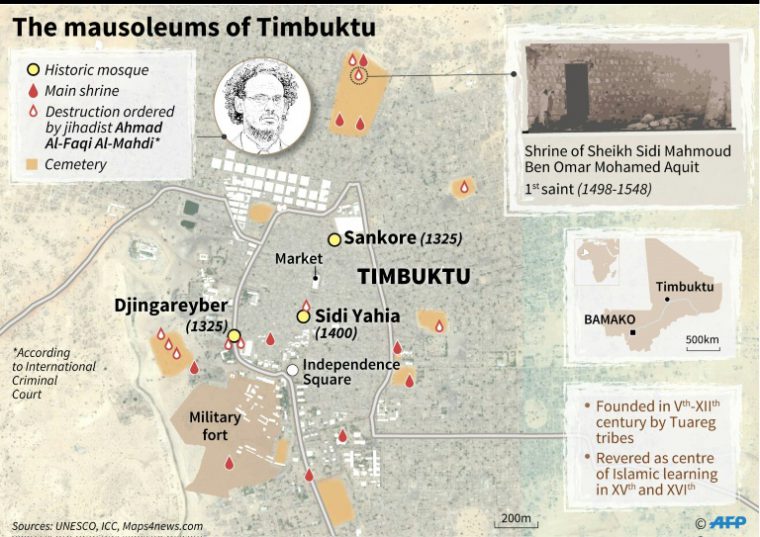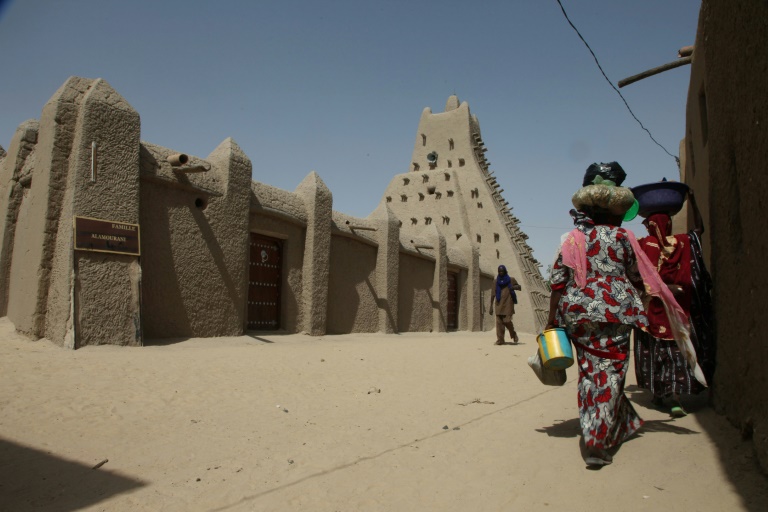Check-in delays at airports hampering LIFT and FlySafair flights
Five years after their destruction the Timbuktu mausoleums have been restored through work carried out by local craftsmen, with help from the UN’s cultural arm UNESCO.
On Thursday the International Criminal Court in The Hague ruled that Malian ex-jihadist Ahmad al-Faqi al-Mahdi caused 2.7 million euros in damages when he destroyed some of the mausoleums and ordered the payment of compensation to victims.
Mahdi, of the Tuareg people, was jailed for nine years by the court in a landmark verdict in September 2016 after he pleaded guilty to directing attacks on the UNESCO World Heritage site.
-‘City of 333 saints’ –

The mausoleums of Timbuktu
The mausoleums are the tombs of revered Muslim sages, known as “saints” in Timbuktu, a city listed as a UNESCO World Heritage site, then in 2012 put on its List of World Heritage in Danger.
According to UNESCO the city counts a total of 16 cemeteries and mausoleums which “were an important part of the region’s religious belief system and were widely thought to protect the city from danger”.
As well as in cemeteries and mosques, the revered mausoleums, adorned with headstones and other funerary insignia, are found in alleyways and private residences of the city. Experts say the oldest go back to the 14th century.
The fabled city of Timbuktu, founded by Tuaregs between the fifth and 12th centuries, has been nicknamed the “city of 333 saints”, a reference to the number of Muslim sages buried there.
According to a Malian historian the number was the equivalent of Christian patron saints.
They were considered as protectors of the city, and were called on for marriages, to pray for rain and fight against disease.
– Islamic centre of learning –

This 15th-century mosque was hacked apart by the Jihadist fighters who occupied Timbuktu in 2012
Timbuktu was an important centre of learning for the diffusion of Islamic culture, a crossroads and an important marketplace.
The cultural and economic apogee of Timbuktu came about during the 15th and 16th centuries.
The city is the site of three major historic mosques: Djingareyber, Sankore and Sidi Yahia. Although restored in the 16th century the three mosques are today threatened by advancing sand dunes.
The city is also known for its tens of thousands of manuscripts, some of which go back to the 12th century, and others to the pre-Islamic era.
– Destruction and reconstruction –
In 2012, jihadists linked to groups such as Al-Qaeda, including Ansar Dine, destroyed 14 of the 16 mausoleums inscribed on the World Heritage List.
The jihadists used pickaxes and bulldozers to demolish the sites, denouncing them as idolatrous.
The Islamists took over northern Mali in March-April 2012, after a March coup had plunged the west African state into chaos. A French-led international military operation helped drive them off.
From March 2014 to July 2015 reconstruction work was carried out under a programme launched by UNESCO and financed by several countries and institutions.
In February 2016 the city retook possession of its sanctuaries which had been rebuilt like the originals.
Download our app